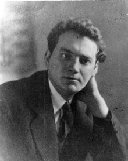
An envelope is a common packaging item, usually made of thin, flat material. It is designed to contain a flat object, such as a letter or card.
Traditional envelopes are made from sheets of paper cut to one of three shapes: a rhombus, a short-arm cross or a kite. These shapes allow the envelope structure to be made by folding the sheet sides around a central rectangular area. In this manner, a rectangle-faced enclosure is formed with an arrangement of four flaps on the reverse side.
A folding sequence such that the last flap closed is on a short side is referred to in commercial envelope manufacture as a pocket – a format frequently employed in the packaging of small quantities of seeds. Although in principle the flaps can be held in place by securing the topmost flap at a single point (for example with a wax seal), generally they are pasted or gummed together at the overlaps. They are most commonly used for enclosing and sending mail (letters) through a prepaid-postage postal system.
Up until 1840, all envelopes were handmade, each being individually cut to the appropriate shape out of an individual rectangular sheet. In that year George Wilson in the United Kingdom patented the method of tessellating (tiling) a number of envelope patterns across and down a large sheet, thereby reducing the overall amount of waste produced per envelope when they were cut out. In 1845 Edwin Hill and Warren de la Rue obtained a patent for a steam-driven machine that not only cut out the envelope shapes but creased and folded them as well. (Mechanised gumming had yet to be devised.) The convenience of the sheets ready cut to shape popularized the use of machine-made envelopes, and the economic significance of the factories that had produced handmade envelopes gradually diminished.
History of envelopes
The first known envelope was nothing like the paper envelope of today. It can be dated back to around 3500 to 3200 BC in the ancient Middle East. Hollow clay spheres were molded around financial tokens and used in private transactions. The two people who discovered these first envelopes were Jacques de Morgan, in 1901, and Roland de Mecquenem, in 1907.
Paper envelopes were developed in China, where paper was invented by 2nd century BC. Paper envelopes, known as chih poh, were used to store gifts of money. In the Southern Song dynasty, the Chinese imperial court used paper envelopes to distribute monetary gifts to government officials.
In Western history, from the time flexible writing material became more readily available in the 13th century until the mid-19th century, correspondence was typically secured by a process of letter folding and sealing which sometimes employed elaborate letterlocking techniques to indicate tampering or prove authenticity. Some of these techniques, which could involve stitching or wax seals, were also employed.
Prior to 1840, handmade envelopes were all that were available for use, both commercial and domestic. In 1840 George Wilson of London was granted a patent for an envelope-cutting machine (patent: "an improved paper-cutting machine"), but the envelopes still needed to be hand folded. There is a picture of the front and backside of an envelope stamped in 1841 here on this page. It seems to be machine cut. In 1845, Edwin Hill and Warren De La Rue were granted a British patent for the first envelope-folding machine.
The "envelopes" produced by the Hill/De La Rue machine were not like those used today. They were flat diamond, lozenge (or rhombus)-shaped sheets or "blanks" that had been pre-cut to shape before being fed to the machine for creasing and made ready for folding to form a rectangular enclosure. The edges of the overlapping flaps treated with a paste or adhesive and the method of securing the envelope or wrapper was a user choice. The symmetrical flap arrangement meant that it could be held together with a single wax seal at the apex of the topmost flap. (That the flaps of an envelope can be held together by applying a seal at a single point is a classic design feature of an envelope.)
Nearly 50 years passed before a commercially successful machine for producing pre-gummed envelopes, like those in use today, appeared.
The origin of the use of the diamond shape for envelopes is debated. However, as an alternative to simply wrapping a sheet of paper around a folded letter or an invitation and sealing the edges, it is a tidy and ostensibly paper-efficient way of producing a rectangular-faced envelope. Where the claim to be paper-efficient fails is a consequence of paper manufacturers normally making paper available in rectangular sheets, because the largest size of envelope that can be realized by cutting out a diamond or any other shape which yields an envelope with symmetrical flaps is smaller than the largest that can be made from that sheet simply by folding.
In 1998, the U.S. Postal Service became the first postal authority to approve a system of printing digital stamps. With this innovative alternative to an adhesive-backed postage stamp, businesses could more easily produce envelopes in-house, address them, and customize them with advertising information on the face.
Bacon 'n' Cheese Bite
- 1 cup biscuit baking mix
- 1/2 cup processed cheese spread
- 1/2 cup (2 ounces) finely shredded Cheddar cheese
- 2 tablespoons real bacon bits
- 1/3 cup club soda
- Preheat oven to 450º. Coat two rimmed baking sheets with cooking spray.
- In a medium bowl, beat all ingredients except club soda until well mixed.
- Add club soda and beat until well combined. Let stand 5 minutes.
- Drop by teaspoonfuls 2 inches apart onto baking sheets. Bake 7 to 10 minutes, or until golden.
- Serve immediately or store in airtight container in freezer up to 2 months.
1925 – Gore Vidal, American author (d. 2012)
1935 – Charles Duke, American astronaut
1941 – Chubby Checker, American singer-songwriter
National Techies Day on October 3rd encourages students to consider a career in technology. With so many opportunities in the growing technology field, students seeking a career in technology will find promising choices anywhere they look.
In 2012, the Engine Advocacy commissioned a report by the Bay Area Council Economic Institute in California. According to the report, for every high-tech job, four more jobs are created. That’s a lot of economic boost created by one industry.
By 2030, the technology sector will continue to grow while other job sectors may decline. While the jobs future changes, one thing remains steady – technology. Healthcare technologies will continue growing by nearly 48 percent. While research ramps up, surgeons and medicine take advanced technologies to a whole new level. With it, they need software specialists trained to maintain the equipment and train the medical personnel.
Beyond medical technology, manufacturing advances technology every day. When considering the future of the automotive world alone, specialized technology keeps up the demand for qualified professionals.
Software development grows every day. However, if we examine technology’s impact on manufacturing, security, and global environmental solutions, we can’t expect to ignore our future needs. The students in the classroom will be the skilled, trained technology-savvy employees of tomorrow. We need them to be.
Take note that National Techies Day falls during National Cyber Security Awareness Month. Techies ensure our devices are protected and secured. They develop the software and help us maintain our computers, smart devices and more. If you don’t protect your computers – find a techie today!
NATIONAL TECHIES DAY HISTORY
With a growing need for employees with advanced technical skills in America, Techies.com and CNT Networks launched National Techies Day. In 1999, nearly 60% of new jobs were expected to require advanced technical skills that Americans didn’t have. The tech companies and the day encourage kids to embrace computer science and even the monikers sometimes attached to contemporary technology.
Being a computer nerd or geek, like National Day Calendar’s own Guru of Geek, in the fast-growing world of technology opens doors to career opportunities.












